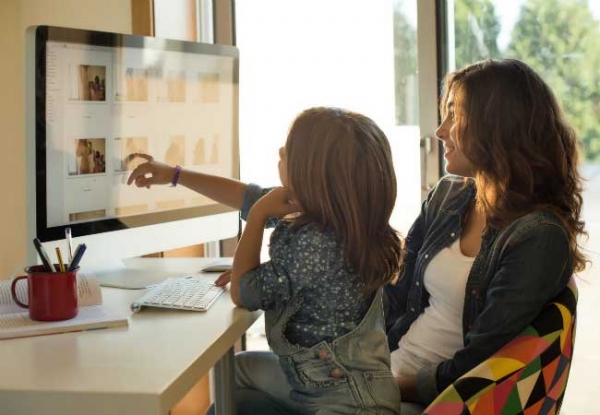That’s Not a Box of Photos in Your Attic, It’s a Box of Stories
by Jennifer Niloff
More often than not, our old family photos, albums and videos have been pushed aside and stored somewhere out of place. If they’re not, they’re often overlooked and forgotten on a shelf. Who are the people in those photos? What were their lives like? Who are they to me?
Your children and grandchildren will lose their history if it’s not preserved, but it’s not just photos and videos. It’s stories and memories and so much more. Create a digital footprint of your past as well as your future. It sounds hard, but we’ll make it easy for you—just follow the personal digital archiving advice below.
You don’t need a full family genealogy, but you do need to tell the important stories.
When most people think about family history projects like personal digital archiving, they imagine mountains of work and slow rewards. You don’t need to go down that road to keep a record of what matters most to your family. Start simple and build based on what works best. The easiest way to learn about your past is to ask the people who lived it with you. Your family is a wealth of information about their parents and grandparents and their history.
There are a number of ways that you can choose to develop a more comprehensive family history, but in the meantime, just write it down! It doesn’t have to be anything fancy. Write a list of questions and put them into a spreadsheet. This is the first step so use your old photos and videos as prompts for your family.
Some questions might include:
- Where did your grandparents grow up?
- Where did your great-grandparents live?
You don’t have to digitize everything, but you have to save what’s important.
Those old analog photos and videos won’t stay that way forever. If you don’t preserve them in a digital format for your personal digital archiving project soon, they will eventually deteriorate. Your photo albums and film reels will go first and everything else will follow.
The three tips below will help you decide how and what to use:
1. Get rid of the stuff that doesn’t matter.
As you’re going through old photos, throw out any landscape photos or blurry and badly exposed photos that you can’t decipher. Sort through your video tapes and toss anything that has a commercial label on it. If you’re not sure what something is, it’s better to save it than be sorry you didn’t later.
2. Decide what’s important and what’s not.
Be ruthless. Keep an eye out for interesting photos. You only need one or two from the same event. You want to hold onto ones that capture a moment, but just because they include people doesn’t mean you need them. Is everyone smiling? Are their body parts cut off on the edges? When you’ve finished sorting, ask your family for help organizing. Your personal digital archiving project will be more cost effective, and you will be able to maintain that organization digitally.
3. Is outsourcing right for you?
After you’ve organized and consolidated your family collection, it may be too much for you to tackle alone. Videos require special equipment and a certain level of know-how. Photographs are simpler and many can be scanned at home, but slides or albums should be done by a professional. If quality is important to you, it’s best to outsource at least a portion of your personal digital archiving project. Trained technicians will edit your photos and know how to handle your tapes.
Continued on page 2...














